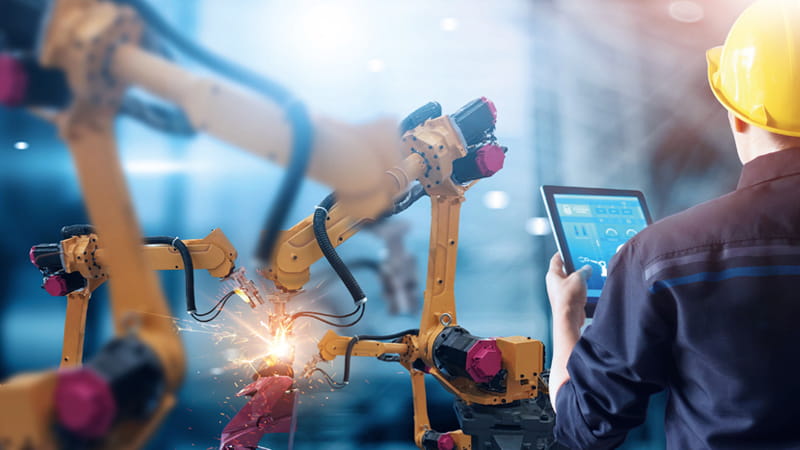Industry Focus Robotics

1. Industrial robotics have replaced humans in hazardous and repetitive work since the 1930s.
2. Robotics can create jobs and move people toward more important and higher-level tasks that add value.
3. The robotics market is showing solid and consistent growth, with the largest market in Asia.
4. Automated Guided Vehicles (AGVs) are being replaced with Autonomous Mobile Robotics (AMRs) as Manufacturing Execution Systems (MES) become more popular.
“Use of robots can advance humanity as a whole, especially when working alongside them.”

Manufacturing execution systems (MES) are computerized systems used in manufacturing to track and document the transformation of raw materials to finished goods. MES provide information that helps manufacturing decision makers understand how current conditions on the plant floor can be optimized to improve production output. MES work in real time to enable the control of multiple elements of the production process (e.g., inputs, personnel, machines and support services).

Expanding market
Though the market this year shows signs of slowing down due to COVID-19, positive growth is expected in the long-term. In 2010, at least 120,000 robots were installed in factories. Five years later, 254,000 units began their diligent work in production lines across the world. The latest reports state that in 2018, more than 400,000 robots were installed across the globe, estimated at a worth of $16.5 billion, with the entire industry growing by 6% and further growth expected in coming years.
Even now, 60 years later, the automotive industry is the largest purchaser of industrial robotics. “Thirty percent of industrial robots are being sold to automotive companies. Investments in new modern production methods and increased production capacity in emerging markets have increased demand,” says Yusuke. “But the electronics market is definitely competing for the number one spot now.”
Globally, Asia is the largest market for industrial robotics. “Two out of every three new robots in 2018 were installed in Asia,” comments Yusuke. And, when looking at the figures, it’s hard not to notice that five countries stand out. “China, Japan, the US, the Republic of Korea and Germany actually account for 74% of global robot sales.” says Yusuke.
2020 and beyond
As Industry 4.0 encourages manufacturing trends that incorporate more automation and data-driven approaches (the so-called ‘fourth industrial revolution’), the robotics industry is the natural forerunner for many of these systems.
“We’re seeing increased desire for complete autonomy using Artificial Intelligence (AI), not just in production, but ordering and transporting, now termed Manufacturing Execution Systems, which tie in with Enterprise Resource Planning (ERP),” says Yusuke. “The robots are fully integrated into the system and improve all the time as more and better data is available and more connectivity is possible. Demand for trainable AIs and upscaling of existing systems is also increasing as companies explore this exciting new field.
Much of Trelleborg’s focus is in the already huge industrial robotics market, where we can add value to new applications requiring precise motion with advanced specifications.
“We’re also expecting to see further movement from automation to autonomy” continues Yusuke. “Automated Guided Vehicles, which rely on something like lines, wires or magnets to navigate are more often being replaced by Autonomous Mobile Robotics.”
Unlike AGVs, AMRs don’t require supporting infrastructure and are being frequently implemented for picking optimization and fleet management. They need just ‘start’ and ‘finish’ locations and can safely navigate around obstacles, choosing the most efficient alternate route.
As costs come down, more personal-use robots are entering the market with interesting new purposes. In the not-sodistant future, you could have a robot ‘coach’ that analyses your form while weight-lifting or playing sports and tells you how to correct your posture and form, while another robot teaches your children in school. “Healthcare and Medical can certainly gain from recent technological innovations. AI-based, data-driven diagnostic systems, personalized medicine and assistants for the disabled are more than possible now,” finishes Yusuke.
MORE INFORMATION
Find out more about how Trelleborg Sealing Solutions supports the robotics industry.
Watch the film:
Sealing Solutions for Robotics Applications at www.tss.trelleborg.com/films
Read the brochure:
www.tss.trelleborg.com/literature
